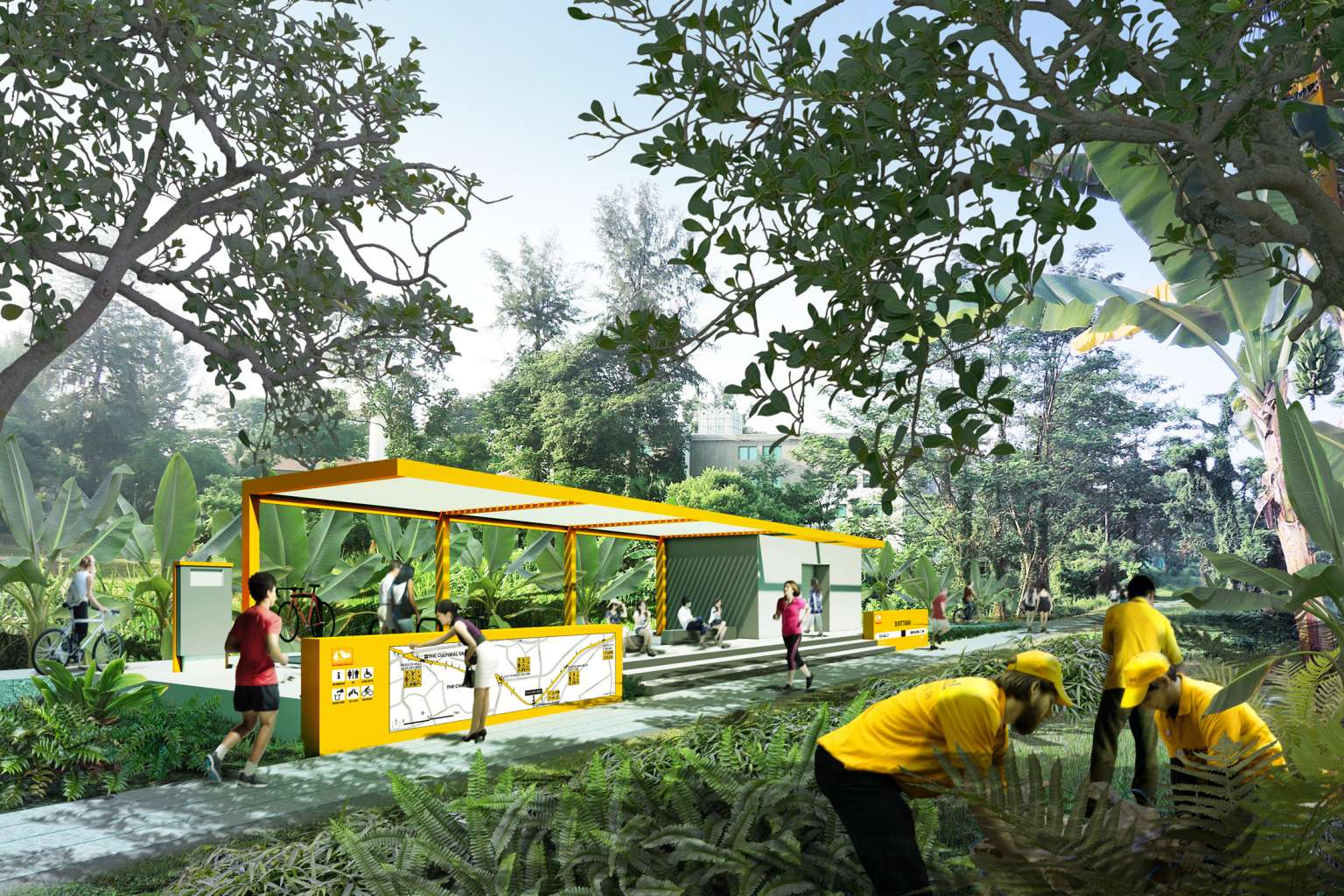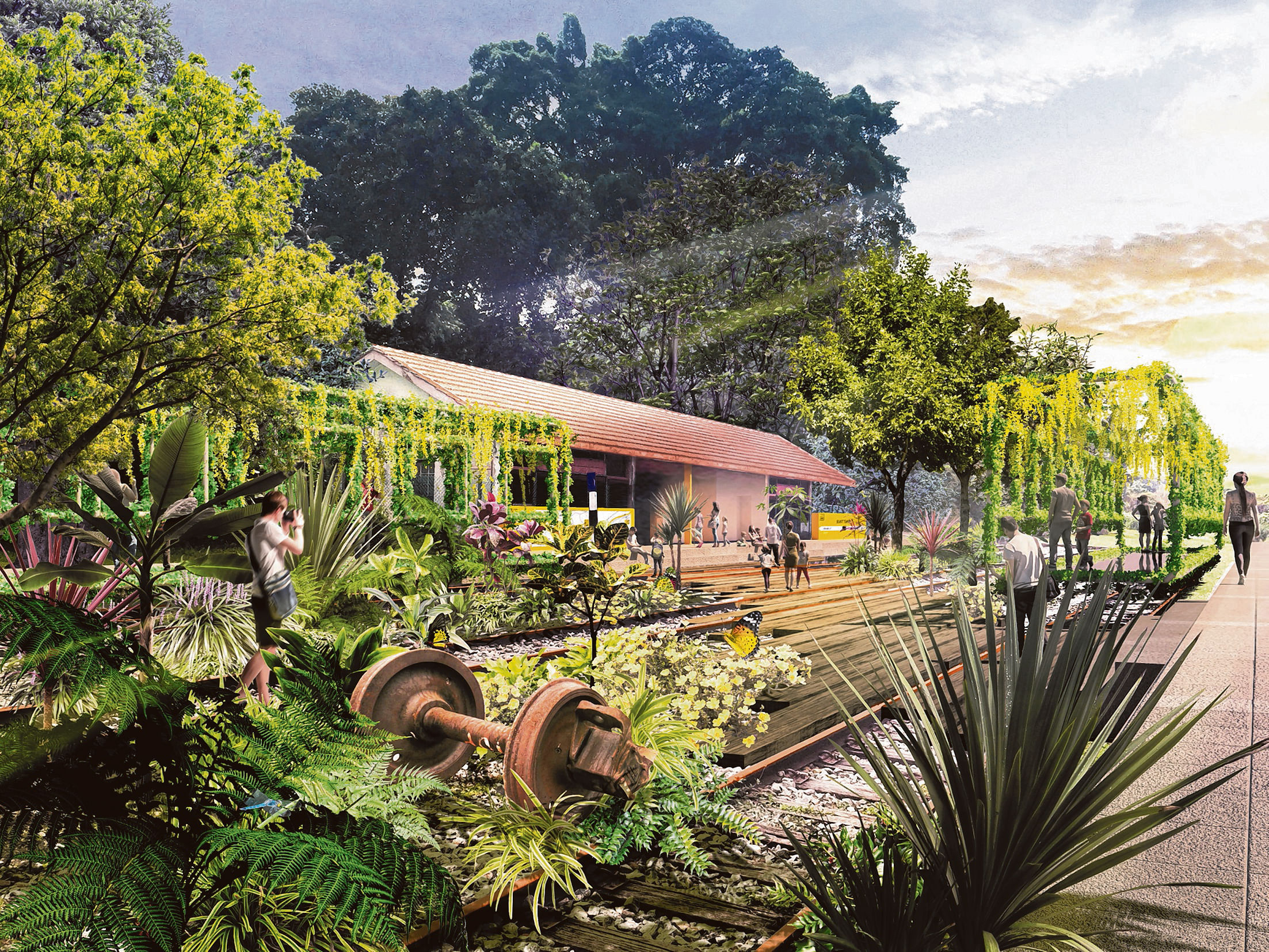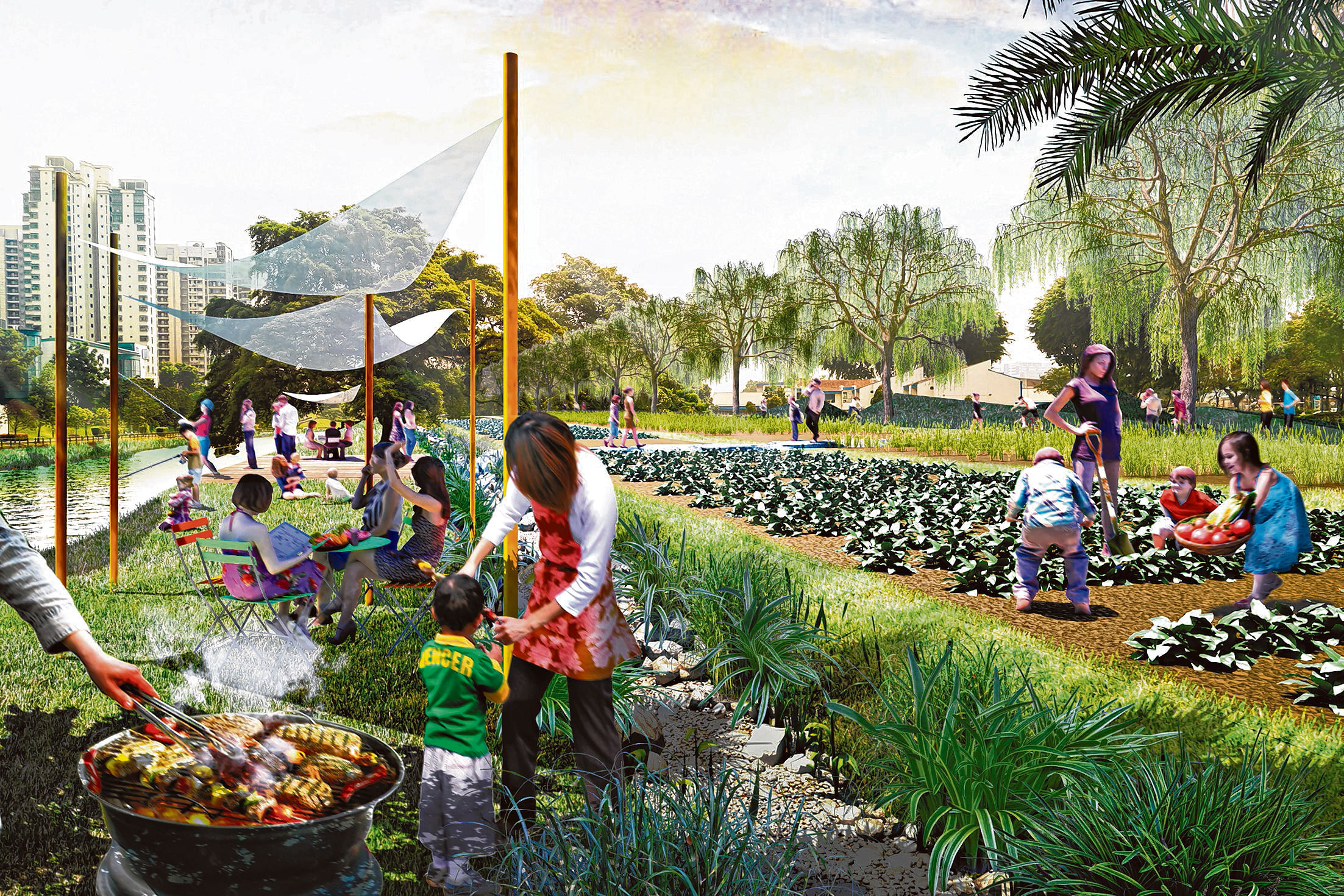Winning concept master plan chosen for Rail Corridor
Sign up now: Get ST's newsletters delivered to your inbox

An artist's impression of a "platform", part of the proposal by Japanese firm Nikken Sekkei, for the Rail Corridor.
PHOTO: NIKKEN SEKKEI
Janice Heng
Follow topic:
SINGAPORE - Paved cycling paths and sheltered rest areas, lively event spaces and quiet rainforest viewing platforms all feature in the winning concept master plan that will guide the development of the Rail Corridor.
On Monday (Nov 9), the wide-ranging proposal by Japanese firm Nikken Sekkei and local landscape firm Tierra Design was announced as the winner of the Urban Redevelopment Authority's (URA) design competition for the future of the former KTM railway land.
But these plans are far from set in stone, and will be further shaped and refined in response to public feedback.
"What we want to do now is to hear the views of Singaporeans on these proposals," said Minister for National Development Lawrence Wong on Monday (Nov 9). He was speaking at the award announcement and the launch of an exhibition on the winning proposals, which runs until Nov 28 at The URA Centre in Maxwell Road.
"We would like all residents to work closely with us to study the stretches of the Rail Corridor that's near your community," added Mr Wong.
In the first quarter of next year, local communities along the Rail Corridor - which stretches from Kranji to Tanjong Pagar - will also be visited by a roving exhibition.
The public is invited to give feedback on the winning proposals at the exhibition and online at http//ura.sg/railrfp from now until the end of the first quarter of next year.
The winning proposal includes plans for 122 access points into the Rail Corridor and 21 "platforms" that will house amenities such as toilets and rest areas along the 24km stretch.
Besides physical infrastructure, the natural greenery along most stretches of the Rail Corridor will be extended and increased as well.
As part of the concept master plan, specific proposals were made for eight special activity nodes along the Rail Corridor:
1. The stretch of the Rail Corridor running under the Queenstown viaduct will become a Passage of Light (below), with features such as interactive floor lighting that responds to the speed of movement. It lights up in different ways when a cyclist or pedestrian passes, for instance. There is also a firefly garden.

2. At Buona Vista, near the one-north business park, the Rail Corridor will become a vibrant activity space where workers and nearby residents can enjoy activities such as outdoor film screenings.

3. A heritage brick drain in Bukit Timah will be conserved as part of a community space for visitors to learn about nature and biodiversity.

4. Greenery will be encouraged to flourish at the former Bukit Timah Railway Station, which will also provide amenities such as a bicycle station and cafe, as well as space for larger events such as the Green Corridor Run.

5. At the former Bukit Timah Fire Station, the Rail Corridor runs close to Bukit Timah Nature Reserve. Here, a forest walk and observation tower will give visitors a chance to get close to nature in an unobtrusive way.

6. The Rail Corridor stretch under Mayfair Park PIE viaduct will be transformed into a Community Cave, with community decks for yoga and a rock-climbing wall.

7. At the residential area of Stagmont Ring, the Rail Corridor will become a community space, with community farming plots, a children's playground, barbecue lawns and fishing ponds.

8. A new northern gateway into the Rail Corridor will be established at Kranji next to the Mandai River, providing recreation options from cycling to kayaking.

Separately, winning concept proposals were chosen for two specific areas along the Rail Corridor: the historic former Tanjong Pagar Railway Station, and an area at Choa Chu Kang to be merged with future residential developments.

A team comprising local firm MKPL Architects and Chinese firm Turenscape International were behind both designs.
Their winning proposal for Tanjong Pagar Railway Station includes a public park in front of the station and an integrated entrance to the upcoming Circle Line Cantonment MRT station. Commuters emerging from the MRT station will be greeted by the conserved railway tracks of old.
As for the Rail Corridor stretch at Choa Chu Kang, alongside the Pang Sua Canal, the winning proposal focuses on integrating future housing developments with a natural landscape, with walkways at different heights that weave through greenery.
At the launch of the exhibition, the URA also announced that the two steel truss bridges along the Rail Corridor have been proposed for conservation.
These landmark bridges are located near the conserved Bukit Timah Railway Station and the Rail Mall. They will be gazetted as conserved structures, gaining the same legal status and protection as various bridges in the Central Business District and the bandstand in the Botanic Gardens.

